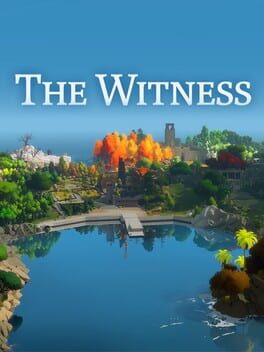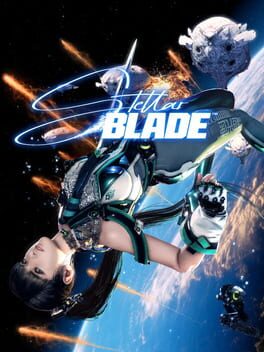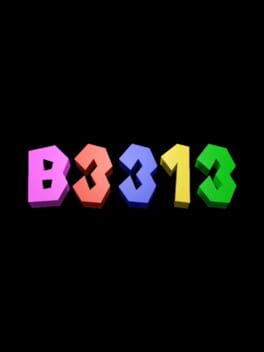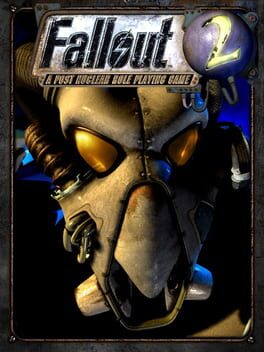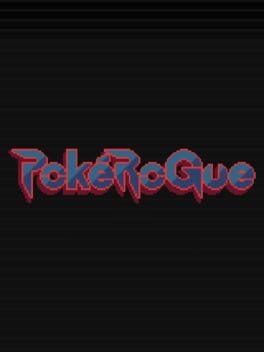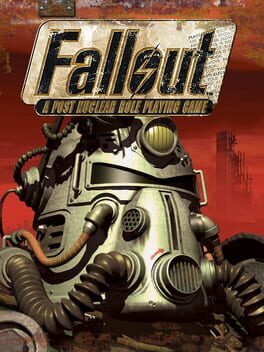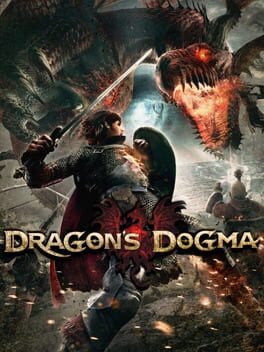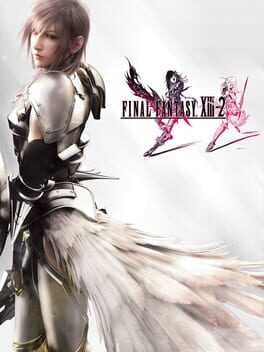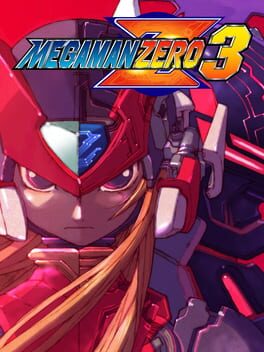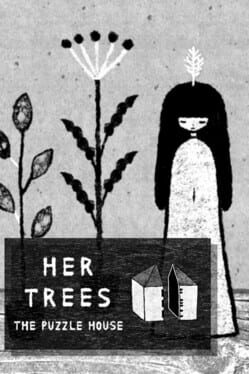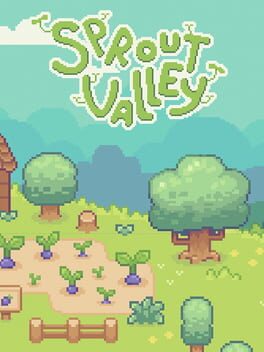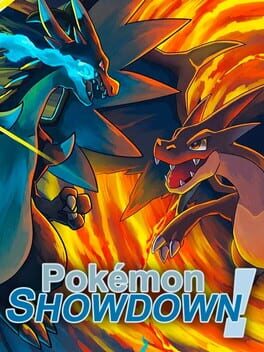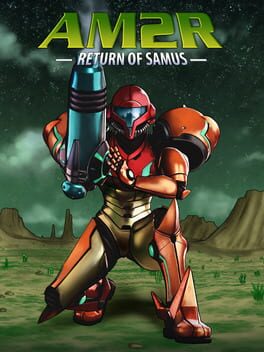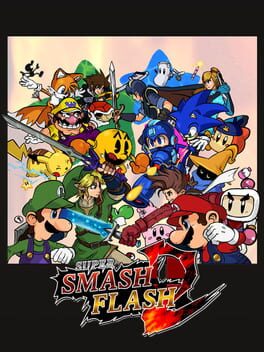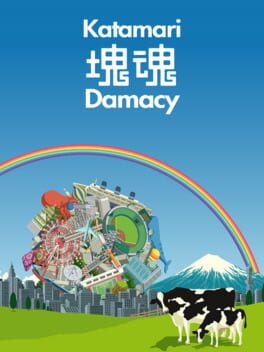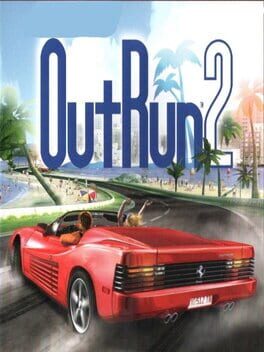Parma
107 reviews liked by Parma
The Witness
2016
Seeing Liz review this here made me remember I once played this! I wrote a really long essay on it that I don't really agree with (please don't dig it up.. or do...)
Perhaps the epitome of the 'teach the player without using words' late 00s/10s philosophy of game design - a not-bad rule of thumb that could (generously) be interpreted as 'maintain some level of clarity/consistency/ design in a way that people can figure out more complex things themselves' that was ultimately twisted into pure idiocy about NEVER USING WORDS that forgets that COMPLETELY NOT USING WORDS ONLY WORKS IF THE GAMEPLAY REALLY FITS OR YOU CAN ASSUME A PLAYER HAS LEGACY KNOWLEDGE FROM PAST GAMES. Sure it's not a bad idea to try and convey puzzle mechanics to players through the experience of using them, but then 10 years of video essays later and everyone thinks it means to make an overwrought first level that 'teaches you how to double jump without using words'. NO!!! THE PRINCIPLE MAKES SENSE IF IT'S SOME PUZZLE GAME LIKE THE WITNESS WHERE THE PUZZLE RULES MAKE INTUITIVE SENSE BUT WOULD BE CLUNKY TO STATE OUTRIGHT!!!!
But... The Witness!! Why do I like it? Why, it has a deep philosophy about the humanity of mankind... NOT!!! I like this game because the puzzles are fun to solve, they interact with the environment, and they sort of acknowledge that a fun part of puzzle solving is failing, walking away and coming back. It incorporates walking way and coming back into the environment and layout! The island is pretty and fun to walk around! The Witness level design "Bangs". I like the tactile feeling and sound design of looking at the panels and drawing the solutions. I could draw those puzzle lines for days.
Look. If I'm being honest I don't really like pure puzzle games that much. I make my little progress across the level select, inevitably get stuck and then forget about the game. My life is a Brain Teaser, I don't want to just Solve Brain Teasers. I don't want to solve middling puzzles in service of revealing some arbitrary conspiracy mystery: I just want to do some fun good puzzles and see some stuff, and this game has that. Playing this was a "Good Time".
Anyways it's time for "Analgesic Lore": did you know a super early version of Even the Ocean - honorary recipient of a 3.6 average Backloggd score rating - was supposed to be a 2D game about exploring islands with PUZZLES...? Well it was, and it never got anywhere because I just don't like puzzles that much, maybe. Then again I made Sephonie's Linking Puzzle system (ironically that game was on an island), which weren't really 'puzzles', but...
More exploration puzzlers set in 3D. Please! Do it for me!
Perhaps the epitome of the 'teach the player without using words' late 00s/10s philosophy of game design - a not-bad rule of thumb that could (generously) be interpreted as 'maintain some level of clarity/consistency/ design in a way that people can figure out more complex things themselves' that was ultimately twisted into pure idiocy about NEVER USING WORDS that forgets that COMPLETELY NOT USING WORDS ONLY WORKS IF THE GAMEPLAY REALLY FITS OR YOU CAN ASSUME A PLAYER HAS LEGACY KNOWLEDGE FROM PAST GAMES. Sure it's not a bad idea to try and convey puzzle mechanics to players through the experience of using them, but then 10 years of video essays later and everyone thinks it means to make an overwrought first level that 'teaches you how to double jump without using words'. NO!!! THE PRINCIPLE MAKES SENSE IF IT'S SOME PUZZLE GAME LIKE THE WITNESS WHERE THE PUZZLE RULES MAKE INTUITIVE SENSE BUT WOULD BE CLUNKY TO STATE OUTRIGHT!!!!
But... The Witness!! Why do I like it? Why, it has a deep philosophy about the humanity of mankind... NOT!!! I like this game because the puzzles are fun to solve, they interact with the environment, and they sort of acknowledge that a fun part of puzzle solving is failing, walking away and coming back. It incorporates walking way and coming back into the environment and layout! The island is pretty and fun to walk around! The Witness level design "Bangs". I like the tactile feeling and sound design of looking at the panels and drawing the solutions. I could draw those puzzle lines for days.
Look. If I'm being honest I don't really like pure puzzle games that much. I make my little progress across the level select, inevitably get stuck and then forget about the game. My life is a Brain Teaser, I don't want to just Solve Brain Teasers. I don't want to solve middling puzzles in service of revealing some arbitrary conspiracy mystery: I just want to do some fun good puzzles and see some stuff, and this game has that. Playing this was a "Good Time".
Anyways it's time for "Analgesic Lore": did you know a super early version of Even the Ocean - honorary recipient of a 3.6 average Backloggd score rating - was supposed to be a 2D game about exploring islands with PUZZLES...? Well it was, and it never got anywhere because I just don't like puzzles that much, maybe. Then again I made Sephonie's Linking Puzzle system (ironically that game was on an island), which weren't really 'puzzles', but...
More exploration puzzlers set in 3D. Please! Do it for me!
Stellar Blade
2024
very impressive that a game can try to be ninja gaiden, nier, devil may cry and sekiro all at once, yet still somehow fail to capture the essence of what it aggrandises.
here’s the thing: this is not a real action game, it is a hollow facsimile of one. stellar blade tokenises action game design traits and shoehorns them into a dull modern template until it coalesces into god of war 2018: titty edition. mechanics lack any real depth while combat design is shallow and simplified. why is it combo-based if these are so heavily disincentivised? why are enemies so static, not playing to the strengths of the system? i’m glad they took the ninja gaiden route (e.g. letting you cancel an attack with a block) over sticking to animation priority, but my respect for the combat system mostly ends there. level and encounter design also lack anything beyond perfunctory consideration. enemy configurations often feel like a copy/paste job and never encourage a change in playstyle (e.g. switching between singular enemies/groups) or utilise risk-reward strategies. btw, there are only so many times you can pull the ‘enemy laying in wait behind the door/wall’ bit. if you must, then at least show me some intent, some playfulness. this shit just feels like getting 40 minutes into dead space and realising you’ll be repeating the same boring jump scare for the next twelve hours. bosses are, unsurprisingly, the best part, but sorely lack the dynamism required for what (i think) they were going for. all of these things are literally, categorically, the most important aspects to nail for a successful action game! it speaks volumes that they all feel half baked.
we can only assume that, at some point, an active decision was made to focus on adding AAA bloat instead of further developing and refining these most crucial design aspects. had shift up not been so enamoured with sonymaxxing every aspect of their game, we could have seen something legitimately interesting. instead we have a bird’s nest of disparate influences, filtered through the money-making machine until a big grey bowl of no-identity slop comes out the other end. who would’ve thought!
here’s the thing: this is not a real action game, it is a hollow facsimile of one. stellar blade tokenises action game design traits and shoehorns them into a dull modern template until it coalesces into god of war 2018: titty edition. mechanics lack any real depth while combat design is shallow and simplified. why is it combo-based if these are so heavily disincentivised? why are enemies so static, not playing to the strengths of the system? i’m glad they took the ninja gaiden route (e.g. letting you cancel an attack with a block) over sticking to animation priority, but my respect for the combat system mostly ends there. level and encounter design also lack anything beyond perfunctory consideration. enemy configurations often feel like a copy/paste job and never encourage a change in playstyle (e.g. switching between singular enemies/groups) or utilise risk-reward strategies. btw, there are only so many times you can pull the ‘enemy laying in wait behind the door/wall’ bit. if you must, then at least show me some intent, some playfulness. this shit just feels like getting 40 minutes into dead space and realising you’ll be repeating the same boring jump scare for the next twelve hours. bosses are, unsurprisingly, the best part, but sorely lack the dynamism required for what (i think) they were going for. all of these things are literally, categorically, the most important aspects to nail for a successful action game! it speaks volumes that they all feel half baked.
we can only assume that, at some point, an active decision was made to focus on adding AAA bloat instead of further developing and refining these most crucial design aspects. had shift up not been so enamoured with sonymaxxing every aspect of their game, we could have seen something legitimately interesting. instead we have a bird’s nest of disparate influences, filtered through the money-making machine until a big grey bowl of no-identity slop comes out the other end. who would’ve thought!
In keeping with the free-flowing, improvisational spirit of Final Fantasy VII, a series of semi-connected thoughts:
- Lots of people are hung up on the minigames for one reason or another, and they are worthy of discussion, though not about whether they belong here (of course they do) or if they're any good (most aren't), but how their purpose has shifted between the original and this iteration. In 1997, they were tonal interludes meant to show off what a strange, crazy planet we're fighting to protect, bursting with unexpected things to see and do. In 2024, they're blown up in length and number to serve as narrative delivery devices, neatly structured to grant further dimension to one or more of your party members while also conveniently padding out the playtime of your $70 luxury consumer purchase.
More than that, even, they're ways of delaying the inevitable. Rebirth isn't really a game about a doomed planet, but a doomed woman, and everyone with the faintest knowledge of FF7 is aware of this. No matter how many sprawling overworld maps or Gold Saucer diversions or matches of Queen's Blood you throw yourself into, you're still on a beeline toward tragedy. Consider Cloud and Aerith's last "date" and how they never get exactly what they want - the candy, the tchotchke, the photo. Our choices in this world, like any other video game world, are merely a dilation of time, a hopeless attempt to forestall the medium's great historical trauma, gamer 9/11.
This is all theoretically interesting, but also has the unfortunate effect of imbricating the story's emotional slam dunk with the grim maximalist demands of the AAA market. You get what you came for... after 100 hours of wildly quality-variable content, of course. Even the Fated Event itself is compromised by a ludicrous boss rush, your characters all barking out their combat sound bites as if nothing has happened, multiversal fanservice rearing its ugly head for no discernible reason. (I ask this with no malice in my heart: why do people care about Zack enough to justify how much screentime he gets here?) In many ways this is a very simple game, but in the one moment that truly called for simplicity, all of the dubious worldline hijinks Nomura planted in the first game got in the way.
- I did find myself moved by one scene toward the end where the game briefly puts you in the shoes of a sad, scared little girl. The original FF7 made remarkable use of modifying your control scheme to convey shifts in your characters' emotional states; in Rebirth they generally overdo or mishandle it, much like everything else, but it worked well here.
- The combat is generally quite enjoyable. It's comforting to know that SE can get an action RPG right after FF16. Even with one installment worth of practice, though, some characters still feel better thought-out than others. Aerith sucks and Barret is truly just sad - what if you wanted to play Bayonetta using nothing but the guns? I have a few other complaints, like how ancillary and easily interrupted magic is, your characters' irritating lack of poise, and some hitbox tracking that would make Miyazaki blush, but they are ultimately pretty minor.
- Morph and Steal are so useless, what gives?
- Guarding feels terrible. No feedback.
- I liked the (PROTORELIC QUEST SPOILERS) fight a lot. It demands careful and attentive play but also gives you lots of options.
- The music is good, of course, although what other possible outcome could there be when you throw an exhausted supergroup of Japanese composers at one of the most beloved OSTs of all time? Unfortunately, the music is also a key factor in one of the game's great failures: it is almost perpetually unable to modulate its atmosphere. This shit is LOUD, all the time. There are no opportunities whatsoever to just be in a moment and collect your thoughts or size up your environment. I knew I was in for disappointment early on when Cloud and Sephiroth rolled into Nibelheim for their ill-fated flashback mission and I heard the sorrowful strains of Anxious Heart... followed by 15 different NPCs barking at me... followed by me stepping on a stool and dragging it noisily along with my character model for 100 feet. The din is constant from start to finish, and if you don't agree, Chadley would like to have a word or fifty thousand with you.
- This is a more personal gripe, but I feel that this trilogy's total inability to establish a horror tone is one of its great betrayals of its predecessor. The writing was on the wall with the Shinra Building in Remake; while that whole dungeon was badly handled in general, there was no attempt whatsoever at conveying any unease or fear. This is likely a result of Sephiroth being overexposed from the jump in Remake so there's no mystery, no terrible legend lurking around the corner. The horror in the original worked partly because Sephiroth was so brutal in a way that the franchise had never grappled with, but also because the world was more recognizably our own and easier to project yourself on than that of any other Final Fantasy: urban, modern, diseased, desperate, doomed. The Midgar Zolom incident makes you feel small and mortal, and the Shinra Mansion like you're a mere human enmeshed in something hostile and supernatural, but in this game those two setpieces are so fucking stupid that they're not even worth talking about.
- I know that everyone is nutting over the dumb dog song but for me the standout is One, Two, SABO!, which plays, as far as I can tell, during exactly one optional combat. Aggressively joyous and exuberant to the point of menace... love it! Fucking Cactuars!
- In a perfect world, both this game and FF16 falling short of SE's sales expectations would tell the company that the AAA open-world model is just not an effective container for video game storytelling, or at least the type that Final Fantasy made its name on so many years ago. It is my unreasonable hope that they will course correct for Part 3 and bring us back to a more focused experience, but as ever, the gamers demand more. Who are the devs to deny them the constant creep toward bigger and better?
- I really enjoyed Remake, but after this installment the project has lost its shine for me. No more remakes!
- One exception: if SE had any sort of cojones left, they would follow up this time dilation game with a remake of time kompression game FF8, omitting/streamlining all of the side content and churning out the most decadent 10-hour banger of all time, though they don't and they won't.
- Lots of people are hung up on the minigames for one reason or another, and they are worthy of discussion, though not about whether they belong here (of course they do) or if they're any good (most aren't), but how their purpose has shifted between the original and this iteration. In 1997, they were tonal interludes meant to show off what a strange, crazy planet we're fighting to protect, bursting with unexpected things to see and do. In 2024, they're blown up in length and number to serve as narrative delivery devices, neatly structured to grant further dimension to one or more of your party members while also conveniently padding out the playtime of your $70 luxury consumer purchase.
More than that, even, they're ways of delaying the inevitable. Rebirth isn't really a game about a doomed planet, but a doomed woman, and everyone with the faintest knowledge of FF7 is aware of this. No matter how many sprawling overworld maps or Gold Saucer diversions or matches of Queen's Blood you throw yourself into, you're still on a beeline toward tragedy. Consider Cloud and Aerith's last "date" and how they never get exactly what they want - the candy, the tchotchke, the photo. Our choices in this world, like any other video game world, are merely a dilation of time, a hopeless attempt to forestall the medium's great historical trauma, gamer 9/11.
This is all theoretically interesting, but also has the unfortunate effect of imbricating the story's emotional slam dunk with the grim maximalist demands of the AAA market. You get what you came for... after 100 hours of wildly quality-variable content, of course. Even the Fated Event itself is compromised by a ludicrous boss rush, your characters all barking out their combat sound bites as if nothing has happened, multiversal fanservice rearing its ugly head for no discernible reason. (I ask this with no malice in my heart: why do people care about Zack enough to justify how much screentime he gets here?) In many ways this is a very simple game, but in the one moment that truly called for simplicity, all of the dubious worldline hijinks Nomura planted in the first game got in the way.
- I did find myself moved by one scene toward the end where the game briefly puts you in the shoes of a sad, scared little girl. The original FF7 made remarkable use of modifying your control scheme to convey shifts in your characters' emotional states; in Rebirth they generally overdo or mishandle it, much like everything else, but it worked well here.
- The combat is generally quite enjoyable. It's comforting to know that SE can get an action RPG right after FF16. Even with one installment worth of practice, though, some characters still feel better thought-out than others. Aerith sucks and Barret is truly just sad - what if you wanted to play Bayonetta using nothing but the guns? I have a few other complaints, like how ancillary and easily interrupted magic is, your characters' irritating lack of poise, and some hitbox tracking that would make Miyazaki blush, but they are ultimately pretty minor.
- Morph and Steal are so useless, what gives?
- Guarding feels terrible. No feedback.
- I liked the (PROTORELIC QUEST SPOILERS) fight a lot. It demands careful and attentive play but also gives you lots of options.
- The music is good, of course, although what other possible outcome could there be when you throw an exhausted supergroup of Japanese composers at one of the most beloved OSTs of all time? Unfortunately, the music is also a key factor in one of the game's great failures: it is almost perpetually unable to modulate its atmosphere. This shit is LOUD, all the time. There are no opportunities whatsoever to just be in a moment and collect your thoughts or size up your environment. I knew I was in for disappointment early on when Cloud and Sephiroth rolled into Nibelheim for their ill-fated flashback mission and I heard the sorrowful strains of Anxious Heart... followed by 15 different NPCs barking at me... followed by me stepping on a stool and dragging it noisily along with my character model for 100 feet. The din is constant from start to finish, and if you don't agree, Chadley would like to have a word or fifty thousand with you.
- This is a more personal gripe, but I feel that this trilogy's total inability to establish a horror tone is one of its great betrayals of its predecessor. The writing was on the wall with the Shinra Building in Remake; while that whole dungeon was badly handled in general, there was no attempt whatsoever at conveying any unease or fear. This is likely a result of Sephiroth being overexposed from the jump in Remake so there's no mystery, no terrible legend lurking around the corner. The horror in the original worked partly because Sephiroth was so brutal in a way that the franchise had never grappled with, but also because the world was more recognizably our own and easier to project yourself on than that of any other Final Fantasy: urban, modern, diseased, desperate, doomed. The Midgar Zolom incident makes you feel small and mortal, and the Shinra Mansion like you're a mere human enmeshed in something hostile and supernatural, but in this game those two setpieces are so fucking stupid that they're not even worth talking about.
- I know that everyone is nutting over the dumb dog song but for me the standout is One, Two, SABO!, which plays, as far as I can tell, during exactly one optional combat. Aggressively joyous and exuberant to the point of menace... love it! Fucking Cactuars!
- In a perfect world, both this game and FF16 falling short of SE's sales expectations would tell the company that the AAA open-world model is just not an effective container for video game storytelling, or at least the type that Final Fantasy made its name on so many years ago. It is my unreasonable hope that they will course correct for Part 3 and bring us back to a more focused experience, but as ever, the gamers demand more. Who are the devs to deny them the constant creep toward bigger and better?
- I really enjoyed Remake, but after this installment the project has lost its shine for me. No more remakes!
- One exception: if SE had any sort of cojones left, they would follow up this time dilation game with a remake of time kompression game FF8, omitting/streamlining all of the side content and churning out the most decadent 10-hour banger of all time, though they don't and they won't.
B3313
2021
can something be obnoxiously juvenile but also a totally unique lightning-in-a-bottle experience at the same time? because that's B3313 to me. the internet iceberg meme/creepypasta origins of this ended up leading to the creation of something that is kind of unlike anything else in existence (even if it is heavily indebted to stuff like Yume Nikki), but it is also somewhat inherently limited by its origins.
it's sort of like if Mario's castle was reimagined as Constantine's Mansion in Thief: The Dark Project, mixed with Yume Nikki and various internet memes. in your endless hours wandering through the confusing labyrinth of the castle, there are isolated moments that are unique and brilliant. and then there others that are just sort of… there. you’ll spend 15 minutes wandering through a bunch of fairly bland, indistinct rooms and corridors and then you’ll come upon something really haunting and memorable. and then, maybe, you'll be right back in the bland mazes. maybe you'll run into some creepy thing and crash the game. maybe creepy thing will be interesting and well executed, or maybe it'll just be obnoxious boilerplate creepypasta stuff.
these contradictions get more and more noticeable the further into it you are. some of the levels are really interesting/bizarre alternate universe takes that recontextualize the original Mario 64 and seem to offer greater commentary about the nature of how nostalgia shifts things into an alternate universe that is actually different from the source of the memory. "i like to remember things my own way. how i remembered them, not necessarily how they happened" says the deeply troubled Fred Madison in David Lynch's Lost Highway. but other times it feels like you wish you were spending more time in the new/more unique areas you occasionally stumble upon, and less in the 6th variation of old Mario 64 levels.
B3313 feels almost like a bigger AAA game to me in both the sheer scope of the project that's filled with a lot of internal contradictions, and in also how much it truly doesn't respect your time. that’s probably the nature of things of this size, and that a lot of people were involved contributing in what seems like a very tumultuous dev cycle after a certain point. but perhaps that explains a lot about the sometimes inconsistent/varied nature of the experience.
i will personally admit to not caring whatsoever about the personalized copy of Mario 64 meme or the numerous ways this hack borrows from different beta builds of Mario 64. i like Mario 64 a lot, but it is absolutely wild to me the way that game has been metabolized into the consciousness of videogame world. and so i do think the whole “this is a beta version of the game” thing and slavishly cobbling together any and every scrap of asset or idea that was cut from an early documented build of Mario 64 to put on this thing is a bit of a dead end artistically. most of the stuff Nintendo used in earlier builds just seemed like temp assets and doesn’t seem THAT interesting to me outside of that context. it's just not very interesting to those of us who are not 17 years old anymore and not still spooked by internet lore. it just feeds back into a lot of fan culture content machine around big franchises that just feels like this self replicating beast that never really goes anywhere and is always invariably beaten back into conformity by the big companies that are in control of these properties.
i am someone who loves strange and unique experiences. but to me, i want stuff that i guess attaches itself more to telling a specific kind of story through what it’s doing, and B3313 is a bit too much online meme-referencing for me to take that aspect of it very seriously at all. B3313 doesn’t have the narrative coherence of a MyHouse which i guess is the other big artsy creepypasta game mod of the moment. and it doesn’t have the artful direction of a Yume Nikki, which it is obviously cribbing the general kind of surreal abstract multidimensional wander maze thing from.
all of this is to say: why did i give it 4 stars and 30+ hours of my time, then? maybe it comes down to: there is an indelible, haunting Tower of Druaga-esque charm to all of it. the commitment to being cryptic and giving the player nothing and doing all these machinations behind the scenes in the game is kind of remystifying what has been lost in a lot of consumer-facing art in general. in games, with all the talk of FromSoft games or like the last couple Zeldas bringing back "old school" difficulties and design values, those are meticulously tested commercial products… not community made romhacks. they simply can’t go anywhere near as far out there as something like this. and we in general are in a moment when so much art seems paralyzed and unwilling to take chances out of risk aversion from industries that have been strip-mined by the rich and powerful. something like B3313 stands in contrast to that - completely unwilling to compromise itself.
with B3313, oftentimes there really is nothing on the other side. but that emptiness starts to feel really intentional after a certain point. as a player, what's interesting in the feeling that you want the design to follow some kind of logic that you can eventually glean so that you can understand what the designers were getting at is that it feels almost like an intentional choice to have it consistently not do that. occasionally it does hint at a deeper language/design sensibility, but mostly it doesn’t. there are times when the “story” or the progression of stages seems to be developing into something more coherent, but then the rug is pulled out from under you. and that happens over and over. because it’s all rug pulls at the end of the day. the message of the design is: whatever happens, whatever journey you go through… it’s all inevitably a way to throw you back into the maze. you’ll always be endlessly wandering the maze.
to me, that says something about Nintendo games in general - how you have these long journeys that (in the case of the newer Zelda especially) aggressively don’t respect your time and send you to all these interesting locations. and then it always just sorta ends, because there’s nothing really deeper at the core a lot of the time. it's escapist entertainment, often with some kind of crypto-conservative values and imagery in it. B3313 feels totally unafraid to unearth and make you fully experience that ugly side.
maybe a lot of our larger culture right now, especially obsessive lore-based fan culture, are just variations of that too. increasingly everything seems like it's hostile, broken down, and filled with different kind of rug pulls. the ground feels totally unstable and there is no “there” there a lot of the time, but we keep shoveling through hoping for new discoveries and hoping for it all to make sense. it’s like being in an abusive, codependent relationship. there’s no light at the end of the tunnel. it’s a disempowerment fantasy. and B3313 captures that feeling absolutely perfectly, in such a uniquely fleshed out way.
there are moments to B3313 that are genuinely unique and fun too, like some of the more creative creepypasta scenarios that i won’t spoil here. or like, occasional stages like the one when you have to climb some structures that are supposed to be some sort of bob-omb factory. you activate the “self-destruct” sequence when you enter which causes you to have to outrun rising lava until the top. and then you get to the top and there’s a little yellow bob-omb guy sitting in a little office and just complaining about how you destroyed the whole factory. it does make me wonder if there’s like some kind of commentary on the tropes of Mario games being attempted in small moments like that. like the fact that Mario is basically a cipher who everything resolves around, and none of these other characters have any agency.
of course, none of that is delved upon for very long. because invariably, you're going to get fed back into the maze. and so that's both the great strength and the great flaw of something like B3313. it doesn't try to offer a way out, it just tries to express what is there. and in doing so it captures a feeling perfectly, in a way that is inspiring. even as a memey internet romhack, it is absolutely something i would call an "art game". there are a lot of memorable areas and moments that really explores the latent strangeness and darkness of Nintendo games, and the latent surrealism of a lot ofearly 3D games in general. it’s also real testament to how far romhacking/modding community projects can really go artistically, along with MyHouse.wad. it could have an enormous impact on a lot of games stuff that comes further down the line. so it’s definitely something that demands more attention and respect outside the whole memey lore ecosystem a lot of this stuff usually occupies. it of course, comes from that however and will probably will do itself no favors in distinguishing itself from that.
i only hope in the future that people take the ambition and interesting ideas from this and run with it in a way that feels unafraid to make a larger statement about the world, and doesn't just do the cowardly thing of retreating with its tail between its legs back into insular internet memes and the online lore ecosystem fed by various content creators. whether or not you think B3313 subverts or further perpetuates that that i guess is up to you. but i still think we have a pretty far way to go.
it's sort of like if Mario's castle was reimagined as Constantine's Mansion in Thief: The Dark Project, mixed with Yume Nikki and various internet memes. in your endless hours wandering through the confusing labyrinth of the castle, there are isolated moments that are unique and brilliant. and then there others that are just sort of… there. you’ll spend 15 minutes wandering through a bunch of fairly bland, indistinct rooms and corridors and then you’ll come upon something really haunting and memorable. and then, maybe, you'll be right back in the bland mazes. maybe you'll run into some creepy thing and crash the game. maybe creepy thing will be interesting and well executed, or maybe it'll just be obnoxious boilerplate creepypasta stuff.
these contradictions get more and more noticeable the further into it you are. some of the levels are really interesting/bizarre alternate universe takes that recontextualize the original Mario 64 and seem to offer greater commentary about the nature of how nostalgia shifts things into an alternate universe that is actually different from the source of the memory. "i like to remember things my own way. how i remembered them, not necessarily how they happened" says the deeply troubled Fred Madison in David Lynch's Lost Highway. but other times it feels like you wish you were spending more time in the new/more unique areas you occasionally stumble upon, and less in the 6th variation of old Mario 64 levels.
B3313 feels almost like a bigger AAA game to me in both the sheer scope of the project that's filled with a lot of internal contradictions, and in also how much it truly doesn't respect your time. that’s probably the nature of things of this size, and that a lot of people were involved contributing in what seems like a very tumultuous dev cycle after a certain point. but perhaps that explains a lot about the sometimes inconsistent/varied nature of the experience.
i will personally admit to not caring whatsoever about the personalized copy of Mario 64 meme or the numerous ways this hack borrows from different beta builds of Mario 64. i like Mario 64 a lot, but it is absolutely wild to me the way that game has been metabolized into the consciousness of videogame world. and so i do think the whole “this is a beta version of the game” thing and slavishly cobbling together any and every scrap of asset or idea that was cut from an early documented build of Mario 64 to put on this thing is a bit of a dead end artistically. most of the stuff Nintendo used in earlier builds just seemed like temp assets and doesn’t seem THAT interesting to me outside of that context. it's just not very interesting to those of us who are not 17 years old anymore and not still spooked by internet lore. it just feeds back into a lot of fan culture content machine around big franchises that just feels like this self replicating beast that never really goes anywhere and is always invariably beaten back into conformity by the big companies that are in control of these properties.
i am someone who loves strange and unique experiences. but to me, i want stuff that i guess attaches itself more to telling a specific kind of story through what it’s doing, and B3313 is a bit too much online meme-referencing for me to take that aspect of it very seriously at all. B3313 doesn’t have the narrative coherence of a MyHouse which i guess is the other big artsy creepypasta game mod of the moment. and it doesn’t have the artful direction of a Yume Nikki, which it is obviously cribbing the general kind of surreal abstract multidimensional wander maze thing from.
all of this is to say: why did i give it 4 stars and 30+ hours of my time, then? maybe it comes down to: there is an indelible, haunting Tower of Druaga-esque charm to all of it. the commitment to being cryptic and giving the player nothing and doing all these machinations behind the scenes in the game is kind of remystifying what has been lost in a lot of consumer-facing art in general. in games, with all the talk of FromSoft games or like the last couple Zeldas bringing back "old school" difficulties and design values, those are meticulously tested commercial products… not community made romhacks. they simply can’t go anywhere near as far out there as something like this. and we in general are in a moment when so much art seems paralyzed and unwilling to take chances out of risk aversion from industries that have been strip-mined by the rich and powerful. something like B3313 stands in contrast to that - completely unwilling to compromise itself.
with B3313, oftentimes there really is nothing on the other side. but that emptiness starts to feel really intentional after a certain point. as a player, what's interesting in the feeling that you want the design to follow some kind of logic that you can eventually glean so that you can understand what the designers were getting at is that it feels almost like an intentional choice to have it consistently not do that. occasionally it does hint at a deeper language/design sensibility, but mostly it doesn’t. there are times when the “story” or the progression of stages seems to be developing into something more coherent, but then the rug is pulled out from under you. and that happens over and over. because it’s all rug pulls at the end of the day. the message of the design is: whatever happens, whatever journey you go through… it’s all inevitably a way to throw you back into the maze. you’ll always be endlessly wandering the maze.
to me, that says something about Nintendo games in general - how you have these long journeys that (in the case of the newer Zelda especially) aggressively don’t respect your time and send you to all these interesting locations. and then it always just sorta ends, because there’s nothing really deeper at the core a lot of the time. it's escapist entertainment, often with some kind of crypto-conservative values and imagery in it. B3313 feels totally unafraid to unearth and make you fully experience that ugly side.
maybe a lot of our larger culture right now, especially obsessive lore-based fan culture, are just variations of that too. increasingly everything seems like it's hostile, broken down, and filled with different kind of rug pulls. the ground feels totally unstable and there is no “there” there a lot of the time, but we keep shoveling through hoping for new discoveries and hoping for it all to make sense. it’s like being in an abusive, codependent relationship. there’s no light at the end of the tunnel. it’s a disempowerment fantasy. and B3313 captures that feeling absolutely perfectly, in such a uniquely fleshed out way.
there are moments to B3313 that are genuinely unique and fun too, like some of the more creative creepypasta scenarios that i won’t spoil here. or like, occasional stages like the one when you have to climb some structures that are supposed to be some sort of bob-omb factory. you activate the “self-destruct” sequence when you enter which causes you to have to outrun rising lava until the top. and then you get to the top and there’s a little yellow bob-omb guy sitting in a little office and just complaining about how you destroyed the whole factory. it does make me wonder if there’s like some kind of commentary on the tropes of Mario games being attempted in small moments like that. like the fact that Mario is basically a cipher who everything resolves around, and none of these other characters have any agency.
of course, none of that is delved upon for very long. because invariably, you're going to get fed back into the maze. and so that's both the great strength and the great flaw of something like B3313. it doesn't try to offer a way out, it just tries to express what is there. and in doing so it captures a feeling perfectly, in a way that is inspiring. even as a memey internet romhack, it is absolutely something i would call an "art game". there are a lot of memorable areas and moments that really explores the latent strangeness and darkness of Nintendo games, and the latent surrealism of a lot ofearly 3D games in general. it’s also real testament to how far romhacking/modding community projects can really go artistically, along with MyHouse.wad. it could have an enormous impact on a lot of games stuff that comes further down the line. so it’s definitely something that demands more attention and respect outside the whole memey lore ecosystem a lot of this stuff usually occupies. it of course, comes from that however and will probably will do itself no favors in distinguishing itself from that.
i only hope in the future that people take the ambition and interesting ideas from this and run with it in a way that feels unafraid to make a larger statement about the world, and doesn't just do the cowardly thing of retreating with its tail between its legs back into insular internet memes and the online lore ecosystem fed by various content creators. whether or not you think B3313 subverts or further perpetuates that that i guess is up to you. but i still think we have a pretty far way to go.
Fallout 2
1998
The last time I played it, around six years ago, the representative moment in Fallout 2 seemed to be killing the Hubologists as part of the Shi questline: the tiny, underleveled Tom Cruise sprite exploding into gore as his attending hooded cultists float taunts about how they'll kill you in the name of L. Ron Hubbard. The outrage-seeking, the easy satire, the inarticulate disaffection for trends in contemporary social life, and the childlike joy in explicit violence all made the game seem not only like a perfect relic of the attitudes of the turn of the millennium, but of the milieu of American game development at the time. It's a moment at which the line between professional game development and say, flash games about torturing George Bush, is shown to have been terribly thin.
On the last run, what stood out was the converse sense in which this is the progenitor of the post-millenial open-world game, remarkable in just how fully-formed the genre already is. The tight structuring of the first game is almost fully abandoned alongside the time limit: the only thing really keeping the player from the end sequence at any given time is the fact that it's on the opposite end of the map from the starting position, and the accompanying confidence that the player will want to consume all the content with which she's presented along the way. The notion of all this being in service to a main quest isn't totally dispensed with the way it is in the fully realized form of the genre, but it's treated as something of a running joke.
Jokes are really the stock and trade of Fallout 2, and range from Monkey Island-adjacent clownishness at best to something like an adult animated comedy at worst. A few stray lines genuinely worked for me this time: the option to call a woman homophobic for rejecting you and a dialogue option reminiscent of Disco Elysium which only pops up if you've got meth in your inventory to offer a starving child.
The character of combat encounters in this game is really determined by the way armor and health progress more steadily than damage output, which plateaus around the middle of the game unless one uses perks to squeeze out an extra attack or two per round. The high-lethality casino shootouts which characterized the midgame for me were enormously fun in their demands that the player think carefully about range, action economy, and cover. The early game's typified by low-stakes slapfights with rats, and the later game is more of a flat DPS race between bullet sponges, but that sweet spot makes the combat engine seem like it has genuine potential as a TRPG.
Playing this game in a four-day stupor made it easier to see that the game gets worse as it goes on, that the relative focus and sense of tone informing the early areas falls apart around NCR and San Francisco. Navarro and the Oil Rig, in particular, while themed impeccably and nicely built up to over the course of the game, are remarkably empty as dungeons. This time, as with every other time I've played the game, I spoke to the scientist who releases the virus before talking to the one in the reactor room, because the former is placed before the latter, and had to spend twenty minutes looking for a bomb so that I could still trigger the escape sequence.
The totally disparate nature of the world it creates, made up of stereotypes and references and the conflicting aesthetic and thematic preferences of its authors, retains it appeal for me. It's like a constellation of what it meant to be a socially awkward man in the late-90s, like a Rifts campaign frozen in amber. It's commonplace to present New Vegas as the more authentic sequel to Fallout 2 than Bethesda's attempt, but each game's making an effort to pare down an incredibly eclectic product into something like a brand.
On the last run, what stood out was the converse sense in which this is the progenitor of the post-millenial open-world game, remarkable in just how fully-formed the genre already is. The tight structuring of the first game is almost fully abandoned alongside the time limit: the only thing really keeping the player from the end sequence at any given time is the fact that it's on the opposite end of the map from the starting position, and the accompanying confidence that the player will want to consume all the content with which she's presented along the way. The notion of all this being in service to a main quest isn't totally dispensed with the way it is in the fully realized form of the genre, but it's treated as something of a running joke.
Jokes are really the stock and trade of Fallout 2, and range from Monkey Island-adjacent clownishness at best to something like an adult animated comedy at worst. A few stray lines genuinely worked for me this time: the option to call a woman homophobic for rejecting you and a dialogue option reminiscent of Disco Elysium which only pops up if you've got meth in your inventory to offer a starving child.
The character of combat encounters in this game is really determined by the way armor and health progress more steadily than damage output, which plateaus around the middle of the game unless one uses perks to squeeze out an extra attack or two per round. The high-lethality casino shootouts which characterized the midgame for me were enormously fun in their demands that the player think carefully about range, action economy, and cover. The early game's typified by low-stakes slapfights with rats, and the later game is more of a flat DPS race between bullet sponges, but that sweet spot makes the combat engine seem like it has genuine potential as a TRPG.
Playing this game in a four-day stupor made it easier to see that the game gets worse as it goes on, that the relative focus and sense of tone informing the early areas falls apart around NCR and San Francisco. Navarro and the Oil Rig, in particular, while themed impeccably and nicely built up to over the course of the game, are remarkably empty as dungeons. This time, as with every other time I've played the game, I spoke to the scientist who releases the virus before talking to the one in the reactor room, because the former is placed before the latter, and had to spend twenty minutes looking for a bomb so that I could still trigger the escape sequence.
The totally disparate nature of the world it creates, made up of stereotypes and references and the conflicting aesthetic and thematic preferences of its authors, retains it appeal for me. It's like a constellation of what it meant to be a socially awkward man in the late-90s, like a Rifts campaign frozen in amber. It's commonplace to present New Vegas as the more authentic sequel to Fallout 2 than Bethesda's attempt, but each game's making an effort to pare down an incredibly eclectic product into something like a brand.
Tevi
2023
PokéRogue
2024
Pokerogue's biggest success in how addictive it is. It's so simple to just be hooked on trying to plan out a team based on the couple of members that have dropped, scout out ones to catch, try to catch a few more in order to get ideal IV's to bolster your starters with, and just grind out floors until you get that run where everything comes together. It's good like that! It makes great use of music and motifs from throughout the Pokemon series, both rival designs are great, and it allows for an incredibly speedy feeling out process of all sorts of Pokemon species, leveling them up insanely quick to feel a sort of greatest hits version of their growth. That Pokerogue can so effectively tap upon the feeling of wanting to catch 'em all and play with all of them is its greatest strength.
Unfortunately, it doesn't even take a full run for Pokerogue to show its faults. AI is rudimentary to a fault, being able to be easily baited based on type match-ups, effectively randomizing learnsets to the point of inefficiency, and ultimately just can't match up with all of the flexibility a player always has at their fingertips. Though this is really only an issue in the early stages of Pokerogue, when the player is still developing their team. By the game's midway point, five or so of the player's final party has probably been solidified, with one 'weak link' to drop out if they happen to see something better. Moreover, due to the way the battles are spread out as an endurance gauntlet, the same types of Pokemon are gonna end up being far more valuable. Whilst you could imagine a player picking up and bonding with whatever weirdos they happen to stumble onto and making some kinda grand narrative, the game is really only suited for two kinds of Pokemon: fast attackers and walls with a lot of resistances. Pokemon like Excadrill leap out to being so ridiculously good in this kind of format, it's almost a punishment to NOT have one on your team, and that goes doubly for any fast set-up sweepers. As the enemy loves to load its opposing trainers with Lum Berries, and it costs less to not get hit at all than to tank hits well, stall or status strategies are incredibly unreliable, inherently removing the usefulness of a littany of Pokemon. Pokerogue, ultimately, is a game where your run is successful because of one Pokemon who hits things really hard, a couple of switch-ins to bait that Pokemon's bad match-ups, and then the rest of your team can be rounded out with whatever losers who'll warm the bench. And considering the sheer length of a full run, they're gonna be warming the bench for a while!
I played way too many browser games as a kid to call PokeRogue bad - if I had THIS in my school's computer lab I definitely would've never played anything else and sacrificed all social time at school to play it. There's an intoxicating, addictive element here that's testing your knowledge of every generation of Pokemon in a massive gauntlet. It's just disappointing that the solution is "load Gardevoir with a bunch of drugs and spoons and then she hits everything with the moon until it dies", or variants thereof. It's an unbalanced but fun little experiment that I hope its devs do more with, but the core conceit of how the project works makes it a bit of a solved equation for me that undercuts the whole feel of Pokemon for me.
Unfortunately, it doesn't even take a full run for Pokerogue to show its faults. AI is rudimentary to a fault, being able to be easily baited based on type match-ups, effectively randomizing learnsets to the point of inefficiency, and ultimately just can't match up with all of the flexibility a player always has at their fingertips. Though this is really only an issue in the early stages of Pokerogue, when the player is still developing their team. By the game's midway point, five or so of the player's final party has probably been solidified, with one 'weak link' to drop out if they happen to see something better. Moreover, due to the way the battles are spread out as an endurance gauntlet, the same types of Pokemon are gonna end up being far more valuable. Whilst you could imagine a player picking up and bonding with whatever weirdos they happen to stumble onto and making some kinda grand narrative, the game is really only suited for two kinds of Pokemon: fast attackers and walls with a lot of resistances. Pokemon like Excadrill leap out to being so ridiculously good in this kind of format, it's almost a punishment to NOT have one on your team, and that goes doubly for any fast set-up sweepers. As the enemy loves to load its opposing trainers with Lum Berries, and it costs less to not get hit at all than to tank hits well, stall or status strategies are incredibly unreliable, inherently removing the usefulness of a littany of Pokemon. Pokerogue, ultimately, is a game where your run is successful because of one Pokemon who hits things really hard, a couple of switch-ins to bait that Pokemon's bad match-ups, and then the rest of your team can be rounded out with whatever losers who'll warm the bench. And considering the sheer length of a full run, they're gonna be warming the bench for a while!
I played way too many browser games as a kid to call PokeRogue bad - if I had THIS in my school's computer lab I definitely would've never played anything else and sacrificed all social time at school to play it. There's an intoxicating, addictive element here that's testing your knowledge of every generation of Pokemon in a massive gauntlet. It's just disappointing that the solution is "load Gardevoir with a bunch of drugs and spoons and then she hits everything with the moon until it dies", or variants thereof. It's an unbalanced but fun little experiment that I hope its devs do more with, but the core conceit of how the project works makes it a bit of a solved equation for me that undercuts the whole feel of Pokemon for me.
Stellar Blade
2024
(Demo abandoned)
What the fuck are we doing? How the hell did Dark Souls 3 become the template for action games?
"Oh, it's the potential for good levels!" But what would good level design even look like in this context? Dark Souls 1 has a simple combat system that doesn't rely on large open spaces without obstacles. This way the player can be trusted to defend themselves in most terrain, which in turn enables designs like Blighttown, Sen's Fortress, New Londo Ruins, etc. where enemies can meaningfully interact with the level geometry. One can argue how consistently applied or successful this was in practice, but there is a solid design goal there that's still visible even up to Elden Ring (as scattershot as that game is).
As you make combat systems and enemy AI more complex though, generally you'll have to start making the simplifying assumptions of plenty of open space and no blocking terrain, which in turn restricts your level design capabilities. This is fine if you build the game accordingly, i.e. most of the classic linear action games. But Dark Souls 3 likes do not actually seem to be aware of this and so have dragged along huge amounts of bloat sections (Stellar Blade: swimming, keypads, climbing) so they can continue to pretend that the spaces between fights have any relation to the actual mechanics.
Similarly constructed arguments can also be made for the following Souls systems, which I will leave as an exercise to the reader: items, camera, pacing, leveling.
So I guess the whole point of these games is to grit your teeth so that you can experience the combat system? But is the combat really all that interesting? The camera limits how many aggressive enemies you can reasonably handle at once, and not being able to hitstun enemies with normal attacks pushes you into hit and run defensive play, which in turn pushes you to abuse the simplistic, timing-based parrying and iframe systems that all these games are cursed with. Why bother when you can just play Nioh 2, which commits all the soulslike sins above but at least has actually interesting resource management, accessible hitstun, deep weapon movesets, and so on. Why play any of these games at all when you can play Monster Hunter where the defensive, commitment driven style that soulslikes are known for is a hundred times better executed?
This whole subgenre is a complete dead-end design wise and doesn't look to be getting better anytime soon. What a mess.
What the fuck are we doing? How the hell did Dark Souls 3 become the template for action games?
"Oh, it's the potential for good levels!" But what would good level design even look like in this context? Dark Souls 1 has a simple combat system that doesn't rely on large open spaces without obstacles. This way the player can be trusted to defend themselves in most terrain, which in turn enables designs like Blighttown, Sen's Fortress, New Londo Ruins, etc. where enemies can meaningfully interact with the level geometry. One can argue how consistently applied or successful this was in practice, but there is a solid design goal there that's still visible even up to Elden Ring (as scattershot as that game is).
As you make combat systems and enemy AI more complex though, generally you'll have to start making the simplifying assumptions of plenty of open space and no blocking terrain, which in turn restricts your level design capabilities. This is fine if you build the game accordingly, i.e. most of the classic linear action games. But Dark Souls 3 likes do not actually seem to be aware of this and so have dragged along huge amounts of bloat sections (Stellar Blade: swimming, keypads, climbing) so they can continue to pretend that the spaces between fights have any relation to the actual mechanics.
Similarly constructed arguments can also be made for the following Souls systems, which I will leave as an exercise to the reader: items, camera, pacing, leveling.
So I guess the whole point of these games is to grit your teeth so that you can experience the combat system? But is the combat really all that interesting? The camera limits how many aggressive enemies you can reasonably handle at once, and not being able to hitstun enemies with normal attacks pushes you into hit and run defensive play, which in turn pushes you to abuse the simplistic, timing-based parrying and iframe systems that all these games are cursed with. Why bother when you can just play Nioh 2, which commits all the soulslike sins above but at least has actually interesting resource management, accessible hitstun, deep weapon movesets, and so on. Why play any of these games at all when you can play Monster Hunter where the defensive, commitment driven style that soulslikes are known for is a hundred times better executed?
This whole subgenre is a complete dead-end design wise and doesn't look to be getting better anytime soon. What a mess.
Fallout
1997
There's a version of this game that exists between its admirers, one with too solid a body of discourse built up around it to be called imaginary. This Fallout is the centerpiece of a secular religion of CRPG design, attended by Deus Ex and Planescape Torment, though perhaps finally consigned to the status of Old Testament anticipation by Disco Elysium. Hbomberguy is this faith's high priest.
I'm fond of the Fallout of conversation, in which the skills are consistently useful, there are multiple, organic solutions to problems and the writing is thoughtful and nuanced. The kind of guy whose praise perpetuates belief in this game is often the least racist kind of PC gamer. I'm also fond, however, of the playable piece of software released in 1997 bearing the same name, and feel its merits should be articulated as well.
The structure of Fallout's world is less reminiscent of anything else called an RPG than it is of the evidence-gathering phase of a Phoenix Wright case. There's a manageable number of locations presented through a menu, and in each of them one pokes and prods around, with novel bits of optional content with little long-term bearing but which serve as their own reward, until something moves the world state forward. Fallout's chief innovation wasn't so much opening up the CRPG as subjecting it to the same rigorous structure as the adventure game. While there are filler enemies and random encounters, each of the game's major combats provides the player with the tools necessary to manage the next: Vault 15's SMG, for example, allows the player to deal with the Khans, whose armor makes the upcoming chain of large group firefights survivable.
That progression is driven by new gear and information rather than leveling keeps any of the game's areas from feeling extraneous. Nothing in Fallout ever overstays its welcome, which is enormously beneficial: ideas and characters which would be insufferable in a game a few hours longer are instead presented straightforwardly and immediately moved on from. It's this brevity, and the recognition that a thinly-sketched character is almost always preferable to an overwrought one, that Fallout inherits from tabletop, rather than anything like freedom of choice. It's perhaps the best example of pacing in a western CRPG.
Aside from a few points at which the player's given multiple, equidistant leads to follow up on at once, the progression is incredibly taut and, because its only gating mechanisms are information and ability, feels more essential and less arbitrary than equivalents in the genre. Most of the choices of approach are back-loaded into the last two areas of the game, where the character skills which have been largely useless for the previous two-thirds of the game now function as keys. That these areas can be so easily circumvented by simply wearing a disguise undercuts their significance, but ultimately a high Speech or Science or Big Guns is treated like an item in an adventure game. This is made possible by and supports Fallout's limited scale and general restraint: it's a game where a skill or a tool used two or three times is worth going out of one's way for.
It's probably the first Western RPG to have really good art direction, and I'd suggest resisting the urge to play the game at a modern resolution in order to really appreciate the spritework. The voice work is shockingly solid, and with the exception of some of the better New Vegas characters I don't think the series has ever quite matched the talking heads in this game for memorability. It is so sad to watch the cinematics in this first entry present what would become the series aesthetic as succinctly and stylishly as they do, and to know this would be milked dry in later years as these games got more and more saturated with 50s-dystopian broad satire.
I'm fond of the Fallout of conversation, in which the skills are consistently useful, there are multiple, organic solutions to problems and the writing is thoughtful and nuanced. The kind of guy whose praise perpetuates belief in this game is often the least racist kind of PC gamer. I'm also fond, however, of the playable piece of software released in 1997 bearing the same name, and feel its merits should be articulated as well.
The structure of Fallout's world is less reminiscent of anything else called an RPG than it is of the evidence-gathering phase of a Phoenix Wright case. There's a manageable number of locations presented through a menu, and in each of them one pokes and prods around, with novel bits of optional content with little long-term bearing but which serve as their own reward, until something moves the world state forward. Fallout's chief innovation wasn't so much opening up the CRPG as subjecting it to the same rigorous structure as the adventure game. While there are filler enemies and random encounters, each of the game's major combats provides the player with the tools necessary to manage the next: Vault 15's SMG, for example, allows the player to deal with the Khans, whose armor makes the upcoming chain of large group firefights survivable.
That progression is driven by new gear and information rather than leveling keeps any of the game's areas from feeling extraneous. Nothing in Fallout ever overstays its welcome, which is enormously beneficial: ideas and characters which would be insufferable in a game a few hours longer are instead presented straightforwardly and immediately moved on from. It's this brevity, and the recognition that a thinly-sketched character is almost always preferable to an overwrought one, that Fallout inherits from tabletop, rather than anything like freedom of choice. It's perhaps the best example of pacing in a western CRPG.
Aside from a few points at which the player's given multiple, equidistant leads to follow up on at once, the progression is incredibly taut and, because its only gating mechanisms are information and ability, feels more essential and less arbitrary than equivalents in the genre. Most of the choices of approach are back-loaded into the last two areas of the game, where the character skills which have been largely useless for the previous two-thirds of the game now function as keys. That these areas can be so easily circumvented by simply wearing a disguise undercuts their significance, but ultimately a high Speech or Science or Big Guns is treated like an item in an adventure game. This is made possible by and supports Fallout's limited scale and general restraint: it's a game where a skill or a tool used two or three times is worth going out of one's way for.
It's probably the first Western RPG to have really good art direction, and I'd suggest resisting the urge to play the game at a modern resolution in order to really appreciate the spritework. The voice work is shockingly solid, and with the exception of some of the better New Vegas characters I don't think the series has ever quite matched the talking heads in this game for memorability. It is so sad to watch the cinematics in this first entry present what would become the series aesthetic as succinctly and stylishly as they do, and to know this would be milked dry in later years as these games got more and more saturated with 50s-dystopian broad satire.
Persona 5 Royal
2019
figure skating as an introduction. the animation of ryuji getting angry at missing the taxi. promise list. hideouts only friends know about. "now, girls, let us begin..." joker's idle animation in battle. walking through the rain. "life will change" blaring on the last day of a palace. every variant of beneath the mask. "no matter where you are, no matter how long it takes, you'll always have me. take care. if you ever need me, just say the word, and i'm there." getting lost in the train station. violet and joker's showtime. talking to maruki about life. morgana reminiscing. saying goodbyes properly.
original p5 came out when i was in highschool, just like the thieves. my life during this time was hell, and i dont think itll ever get as bad as then. i couldnt focus on anything but wanting to die, so i skipped out on playing this game. but i really shouldve played this then, because this is a hilarious game. so fun, yet so stupid. it feels like what id write back then; a silly little story where the kids win against the adults that were hurting me so. it wouldve annoyed me to play, sure, but laughter is infinitely more precious, and this is the dumbest game ive ever experienced. it truly is a game for kids, written by adults in their purest, younger forms; it wants to have fun but not think of consequences. this is a shallow piece of candy. shoji meguro, thank you for the best music in the series.
original p5 came out when i was in highschool, just like the thieves. my life during this time was hell, and i dont think itll ever get as bad as then. i couldnt focus on anything but wanting to die, so i skipped out on playing this game. but i really shouldve played this then, because this is a hilarious game. so fun, yet so stupid. it feels like what id write back then; a silly little story where the kids win against the adults that were hurting me so. it wouldve annoyed me to play, sure, but laughter is infinitely more precious, and this is the dumbest game ive ever experienced. it truly is a game for kids, written by adults in their purest, younger forms; it wants to have fun but not think of consequences. this is a shallow piece of candy. shoji meguro, thank you for the best music in the series.
4 lists liked by Parma
